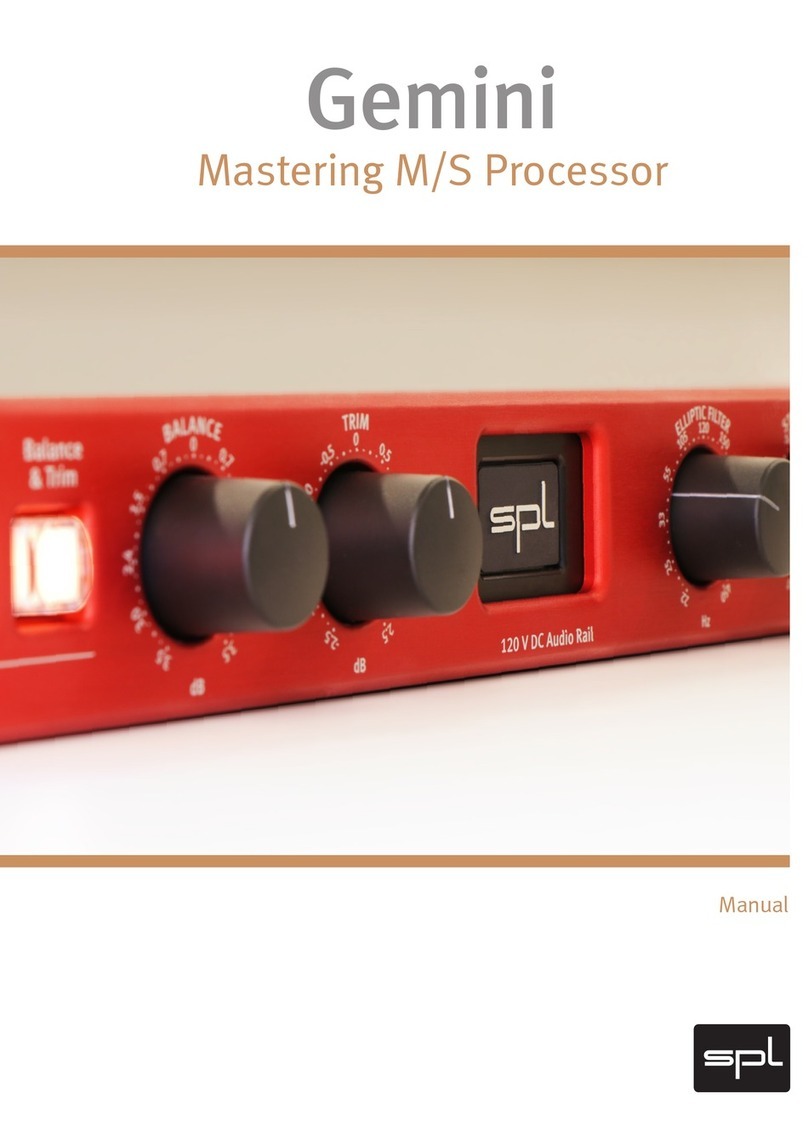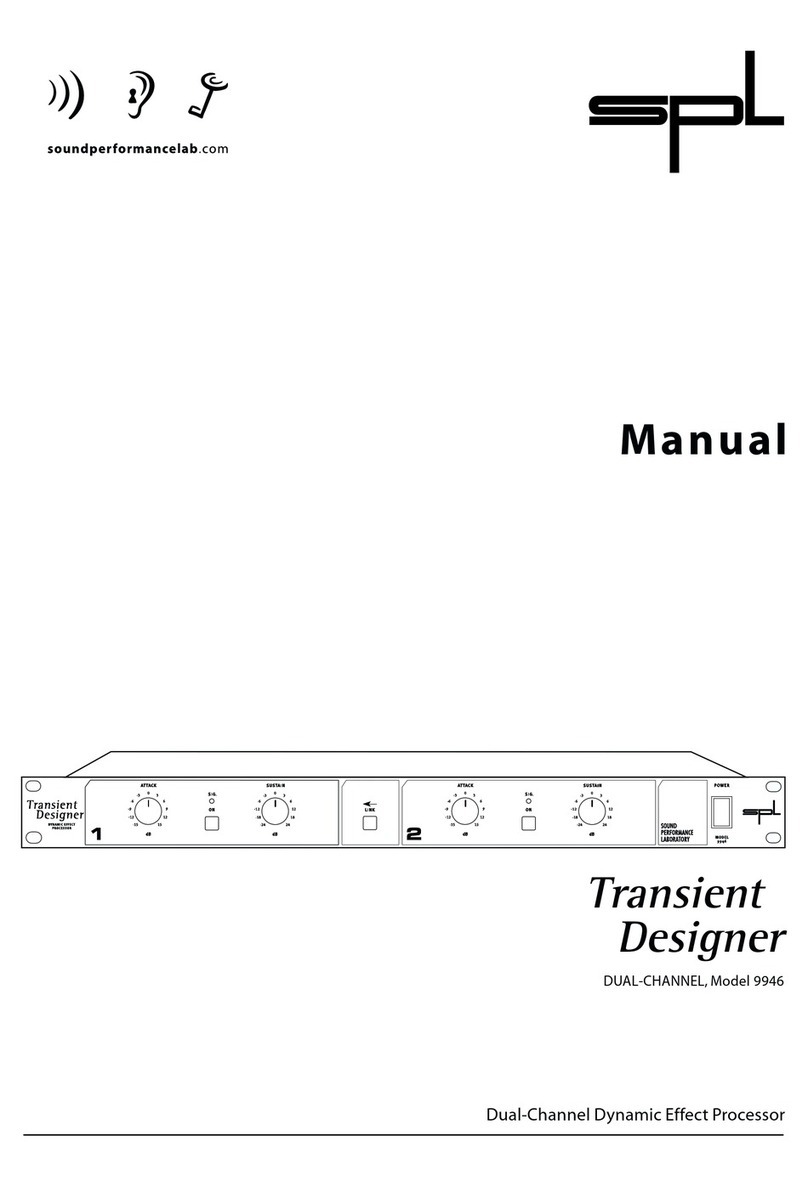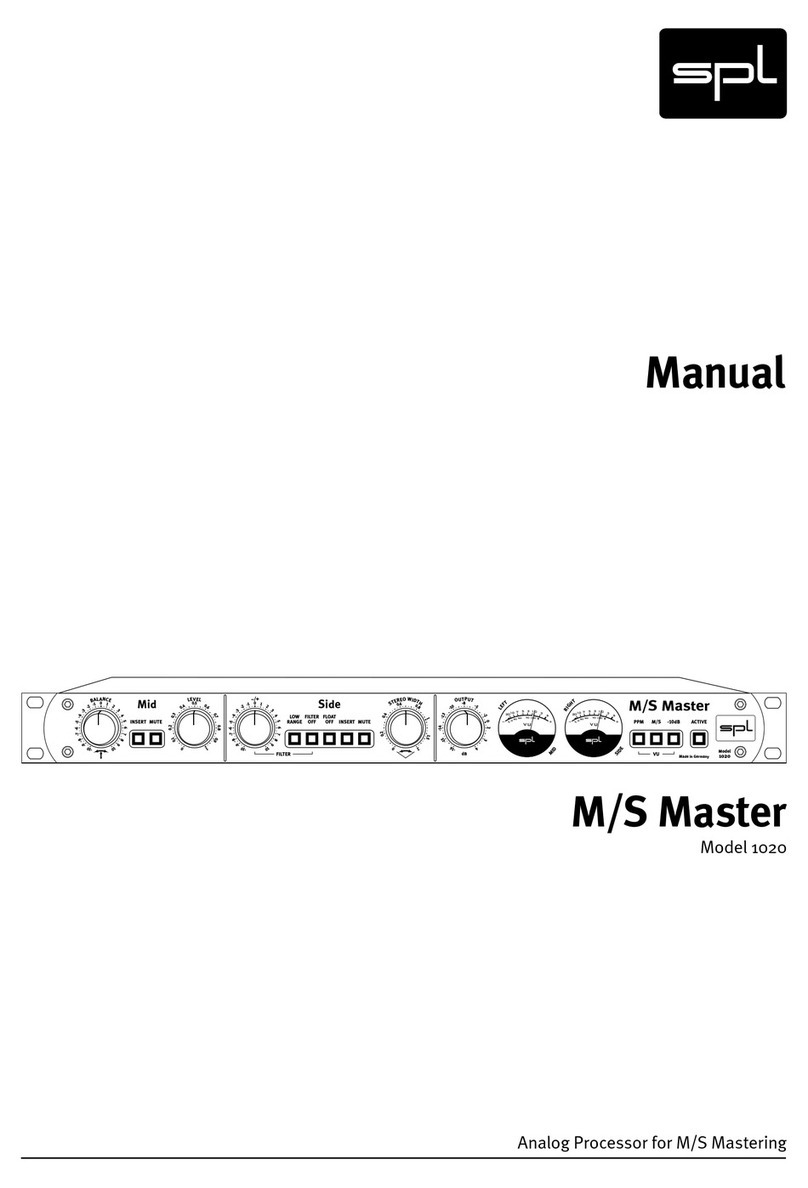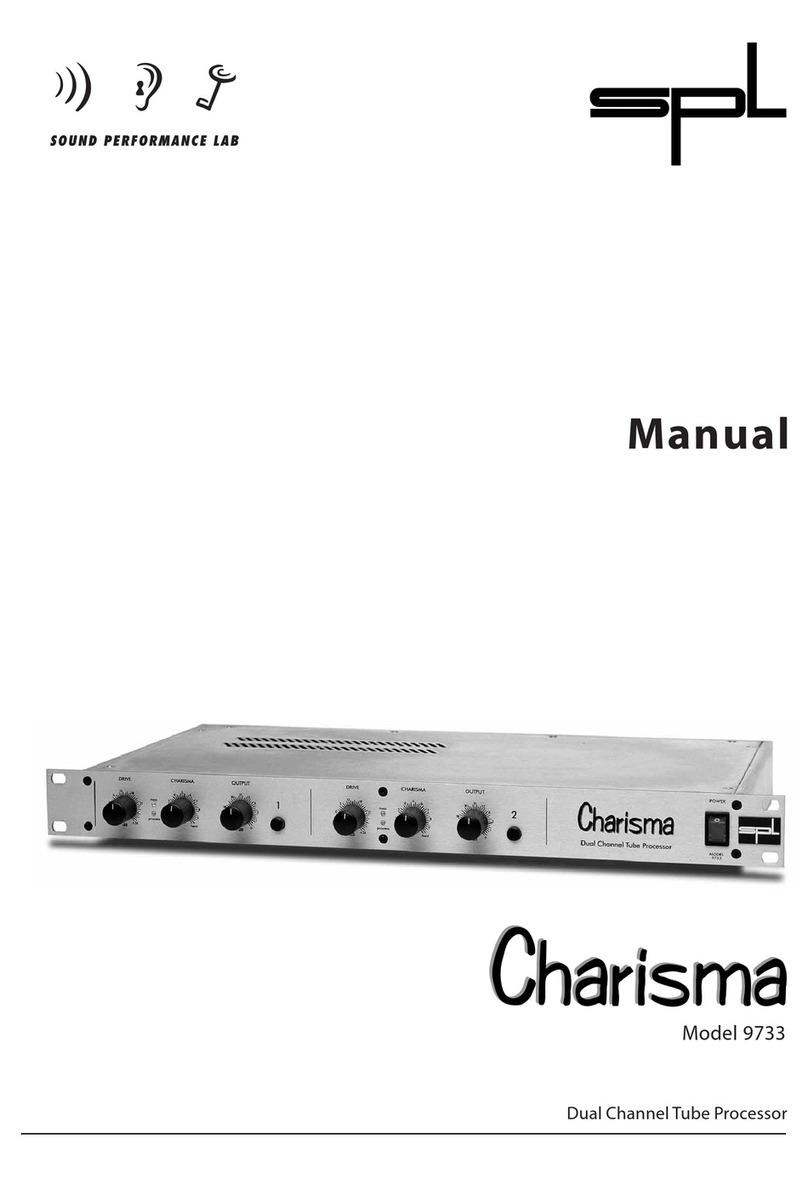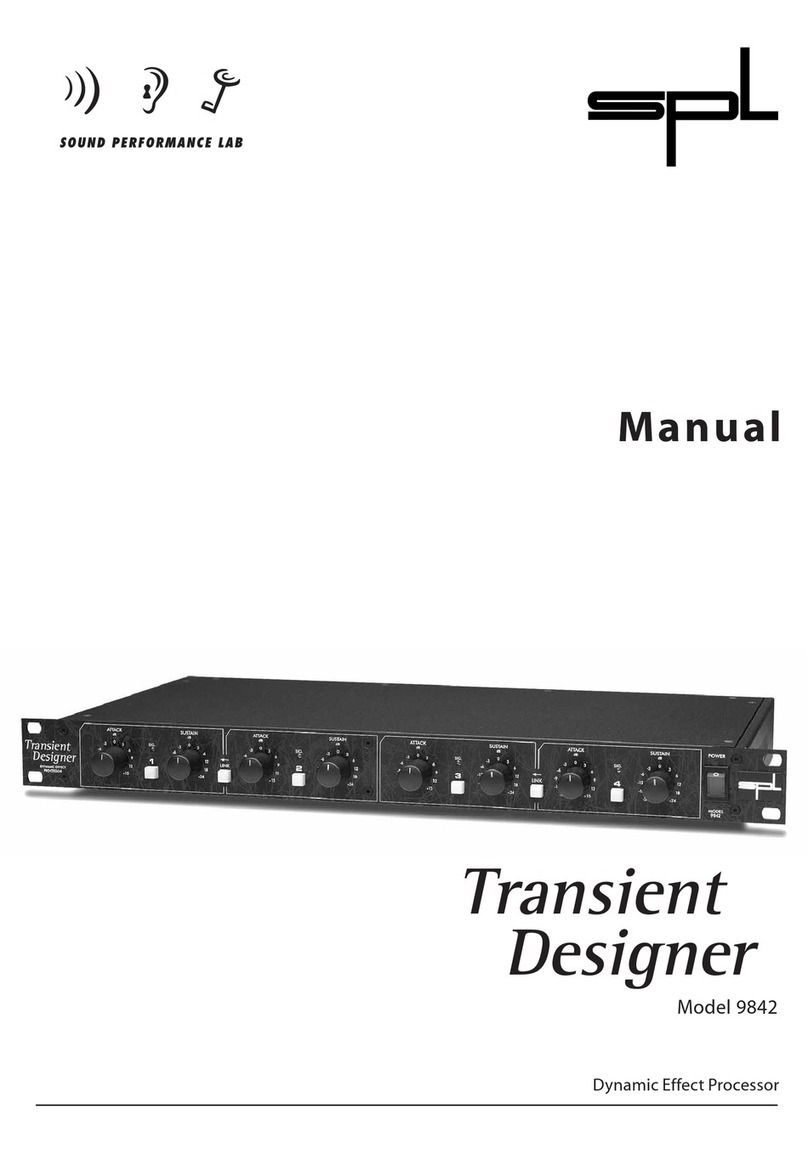On one hand (and depending on the amount applied), from subtle
to extensive harmonic distortion and on the other hand, a com-
paction of the sonic event, that is, a limiting effect that exhibits a
pleasant, rounded or soft sound. Acoustically and also in its range
of applications this can be compared very well with tape saturation
effects. Harmonic distortion and limiting are the generally known,
“classic” tube effects, which are today cornerstones of sound
processing.
But other less known and potentially important effects are a tube’s
ability for improving presence and spacial qualities through its
processing of specific regions of the overtone series. In the analog
original of the TwinTube Processor, a special circuit comes into play
for overtone/harmonic processing that involves a combined coil/
condenser system working in conjunction with the tube. The con-
trol reacts dynamically to the audio signal and thereby processes
both overtones as well as a signal’s phase structure.
The processing of the phase structure influences the moments
of acoustic perception and occurs in microsecond time divisions
– it has to do nothing with the cancellations one associates with
180-degree signal shifts. A decisive factor in resultant tonal qual-
ity is the alignment of level relationships in the overtone spectrum.
Such overtone “enrichment” does not operate on the generator
principle of exciters (wherein distortion is added to the original
signal). The TwinTube harmonics control effects a rather a more
equalized overtone structure resulting in a sound which in ef-
fect appears much more in the foreground, but without doing so
through extreme level changes. Thus, for example, a voice appears
immediate apart from the overall mixture, “sitting” clearly outlined
in the mix’s foreground.
Each SPL plug-in provides the settings feature to save four differ-
ent sets of adjustments. Much faster than the usual saving and re-
calling of presets, the last settings are stored automatically and
can be recalled by just one click. The settings can also be included
into the automation of an audio software to apply different sets of
parameters to specific parts of a song.
Introduction













